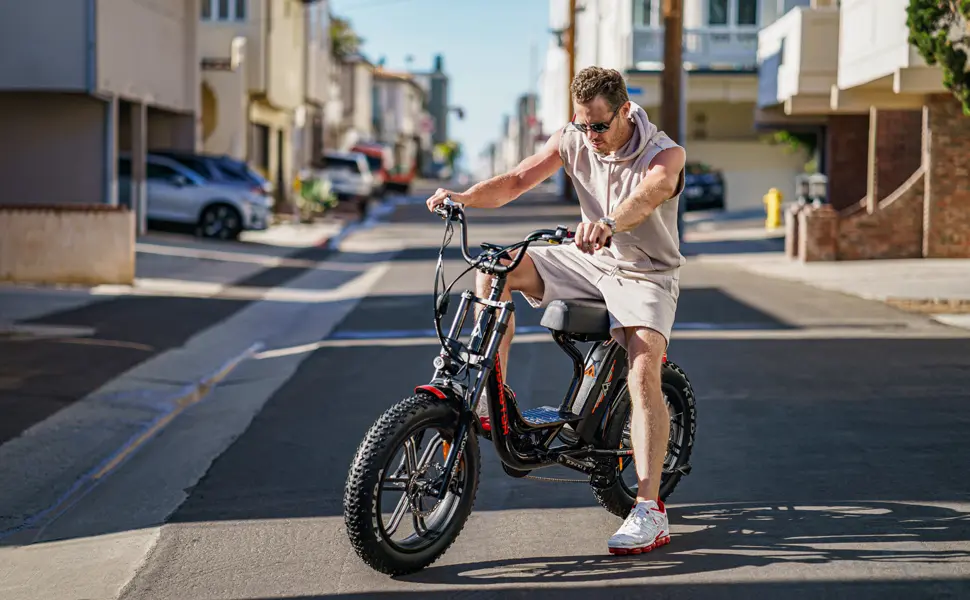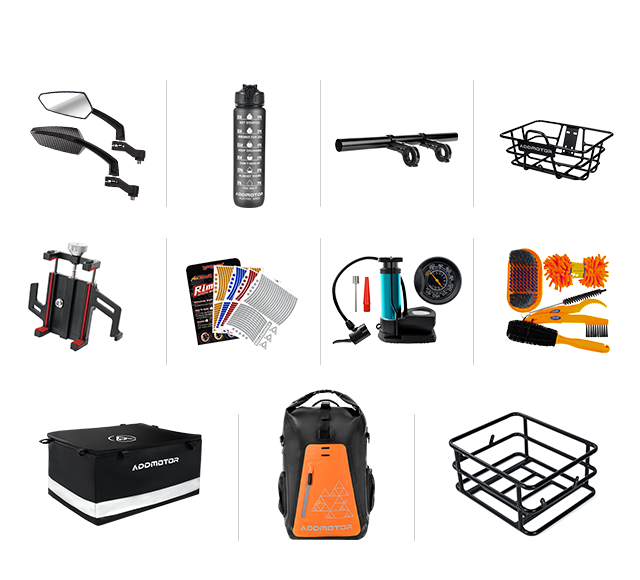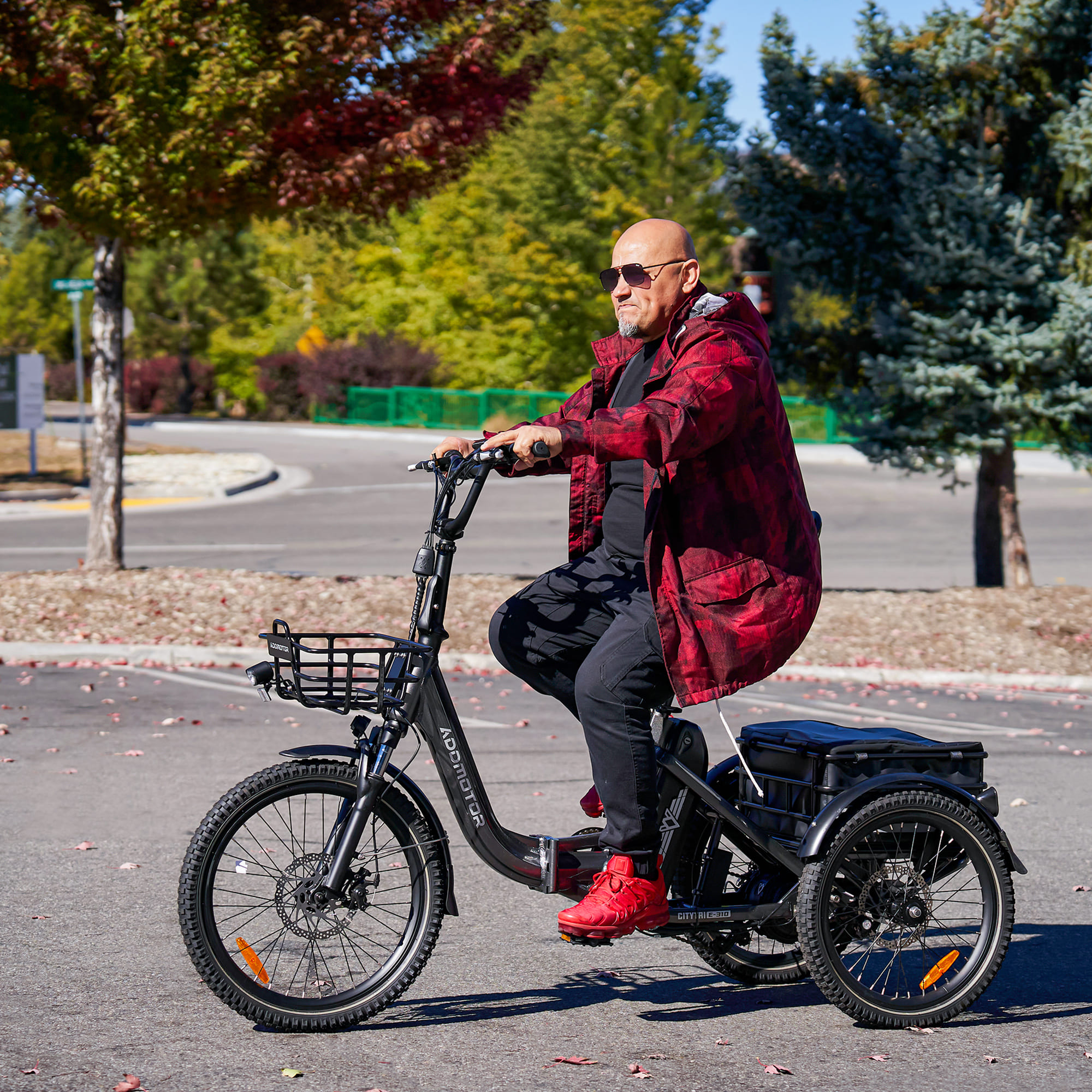What's causing all the electric bike battery heat generation?
By Addmotor | 23 December 2022 | 0 Comments
When it comes to electric bicycles, one of the most important components is the lithium battery. These batteries are necessary for powering electric bikes but can also be dangerous if not handled properly. This is because lithium batteries have the potential to overheat when in use. To understand why this happens and how to prevent it, let's look at why lithium batteries heat up and what safety measures can be taken to ensure their safe operation.

M-66 R7 Cruiser Electric Bicycle with UL-recognized 960Wh Lithium-ion Battery Pack, Ensuring a Max Range of 105 Miles!
The Basics of Lithium Batteries
Lithium-ion batteries are the most common in electronic devices today, including electric bicycles. They are lightweight, compact, and have high energy density, making them ideal for powering electric bikes. However, one downside to using lithium-ion batteries is that they can overheat if not properly managed. This can cause damage to the battery or even lead to fires or explosions.
How E-bike Lithium Batteries Work
E-bike lithium batteries are composed of several cells connected in series or parallel, depending on the voltage requirements of the motor. Each cell contains two electrodes, an anode, and a cathode, separated by an electrolyte that allows ions to travel between them.
When the battery is charged, positively charged lithium ions move from the cathode to the anode through the electrolyte solution, and when it is discharged, they move back again. This process creates a flow of electrons between the two electrodes, providing power for your e-bike’s motor.
The power of an electric bike is dependent on the lithium battery that it runs off of. This makes it important to know this battery's capacity or power. The measurement in which an e-bike’s lithium battery capacity is measured is called watt-hours (Wh). Essentially, watt-hours refer to the number of watts a battery can sustain for one hour.
Knowing this capacity gives the user an idea of how many miles or hours the e-bike would be able to reach with a full charge before it needs to be recharged. While lithium batteries come in various sizes and capacities, understanding their watt-hour capacity allows riders to determine what type best suits their needs and preferences and ensure they are ready for every ride.
Reasons for Heat Generation
There are several reasons why lithium batteries can overheat while being used in electric bicycles. The most common cause of lithium battery heating is overcharging or charging at too high a voltage. Overcharging causes a buildup of energy within the battery that cannot be released, leading to overheating. This can also happen if the charger does not automatically shut off when it reaches maximum charge.
Additionally, if a charger is used with an incorrect voltage for the battery, it can cause it to overcharge and heat up quickly. You must use the correct charger for your electric bicycle’s battery type and only charge it according to manufacturer instructions.
Another reason why lithium batteries get hot is due to mechanical stress on the cells. This occurs when there is excessive vibration or movement, such as when riding along rough terrain or when pushing the bike uphill. This type of stress puts strain on the cells and increases their temperature.
Finally, another reason lithium batteries may heat up is due to mechanical damage caused by improper storage or handling of the battery. If a battery case becomes cracked or damaged, it exposes internal components, which may lead to overheating when charged or discharged. It is important that you store your lithium-ion batteries in a cool, dry place away from direct sunlight and heat sources.
Safety Measures
It is important to take certain safety measures when handling and storing electric bicycle batteries to prevent them from overheating and becoming damaged or dangerous. First, be sure you are using a charger specifically designed for your type of battery, and follow all manufacturer instructions carefully when charging your bike's battery pack.
Additionally, avoid storing your bike's battery in direct sunlight or an area with poor ventilation, as this could lead to overheating issues due to high temperatures. Finally, avoid putting too much stress on the cells by avoiding excessive vibration or movement while riding your bike so that you do not experience any unnecessary heating issues due to mechanical stress on the cells themselves.
Key point to Note
Thermal runaway is a dangerous reaction in lithium-ion batteries, particularly when they are used to electric power bicycles. This exothermic reaction releases energy as heat, potentially leading to a fire or explosion.
Keeping all components of the e-bike at optimal temperatures helps to maintain the battery and overall e-bike safety. Ideally, the charging of the batteries and temperature management should be monitored closely, and battery packs should be kept from becoming overly hot while in operation.
Conclusion
Lithium batteries are critical components of electric bicycles, but they must be handled carefully to prevent them from becoming damaged or dangerous due to overheating issues. Be sure to use only chargers specifically designed for your type of battery and follow all manufacturer instructions carefully when charging your bike’s battery pack. If you're looking for an adult electric bike or a 3-wheel electric bike that has been designed explicitly with technology, then check out our selection here at Addmotor. We offer top-of-the-line models that provide optimal safety and performance every time you hop on your bike.

M-66 R7 Cruiser Electric Bicycle with UL-recognized 960Wh Lithium-ion Battery Pack, Ensuring a Max Range of 105 Miles!
The Basics of Lithium Batteries
Lithium-ion batteries are the most common in electronic devices today, including electric bicycles. They are lightweight, compact, and have high energy density, making them ideal for powering electric bikes. However, one downside to using lithium-ion batteries is that they can overheat if not properly managed. This can cause damage to the battery or even lead to fires or explosions.
How E-bike Lithium Batteries Work
E-bike lithium batteries are composed of several cells connected in series or parallel, depending on the voltage requirements of the motor. Each cell contains two electrodes, an anode, and a cathode, separated by an electrolyte that allows ions to travel between them.
When the battery is charged, positively charged lithium ions move from the cathode to the anode through the electrolyte solution, and when it is discharged, they move back again. This process creates a flow of electrons between the two electrodes, providing power for your e-bike’s motor.
The power of an electric bike is dependent on the lithium battery that it runs off of. This makes it important to know this battery's capacity or power. The measurement in which an e-bike’s lithium battery capacity is measured is called watt-hours (Wh). Essentially, watt-hours refer to the number of watts a battery can sustain for one hour.
Knowing this capacity gives the user an idea of how many miles or hours the e-bike would be able to reach with a full charge before it needs to be recharged. While lithium batteries come in various sizes and capacities, understanding their watt-hour capacity allows riders to determine what type best suits their needs and preferences and ensure they are ready for every ride.
Reasons for Heat Generation
There are several reasons why lithium batteries can overheat while being used in electric bicycles. The most common cause of lithium battery heating is overcharging or charging at too high a voltage. Overcharging causes a buildup of energy within the battery that cannot be released, leading to overheating. This can also happen if the charger does not automatically shut off when it reaches maximum charge.
Additionally, if a charger is used with an incorrect voltage for the battery, it can cause it to overcharge and heat up quickly. You must use the correct charger for your electric bicycle’s battery type and only charge it according to manufacturer instructions.
Another reason why lithium batteries get hot is due to mechanical stress on the cells. This occurs when there is excessive vibration or movement, such as when riding along rough terrain or when pushing the bike uphill. This type of stress puts strain on the cells and increases their temperature.
Finally, another reason lithium batteries may heat up is due to mechanical damage caused by improper storage or handling of the battery. If a battery case becomes cracked or damaged, it exposes internal components, which may lead to overheating when charged or discharged. It is important that you store your lithium-ion batteries in a cool, dry place away from direct sunlight and heat sources.
Safety Measures
It is important to take certain safety measures when handling and storing electric bicycle batteries to prevent them from overheating and becoming damaged or dangerous. First, be sure you are using a charger specifically designed for your type of battery, and follow all manufacturer instructions carefully when charging your bike's battery pack.
Additionally, avoid storing your bike's battery in direct sunlight or an area with poor ventilation, as this could lead to overheating issues due to high temperatures. Finally, avoid putting too much stress on the cells by avoiding excessive vibration or movement while riding your bike so that you do not experience any unnecessary heating issues due to mechanical stress on the cells themselves.
Key point to Note
Thermal runaway is a dangerous reaction in lithium-ion batteries, particularly when they are used to electric power bicycles. This exothermic reaction releases energy as heat, potentially leading to a fire or explosion.
Keeping all components of the e-bike at optimal temperatures helps to maintain the battery and overall e-bike safety. Ideally, the charging of the batteries and temperature management should be monitored closely, and battery packs should be kept from becoming overly hot while in operation.
Conclusion
Lithium batteries are critical components of electric bicycles, but they must be handled carefully to prevent them from becoming damaged or dangerous due to overheating issues. Be sure to use only chargers specifically designed for your type of battery and follow all manufacturer instructions carefully when charging your bike’s battery pack. If you're looking for an adult electric bike or a 3-wheel electric bike that has been designed explicitly with technology, then check out our selection here at Addmotor. We offer top-of-the-line models that provide optimal safety and performance every time you hop on your bike.
Leave a Reply
Your email address will not be published.Required fields are marked. *
Latest Stories




